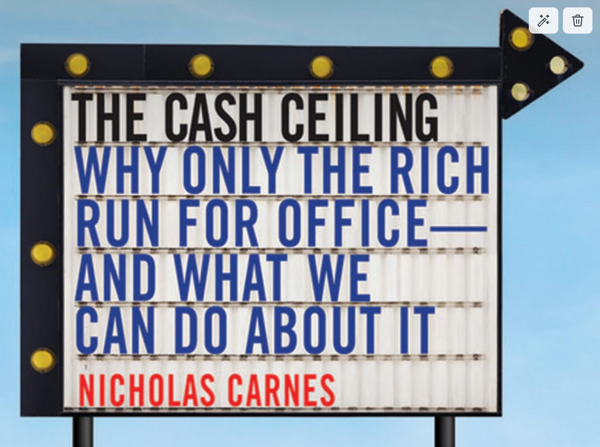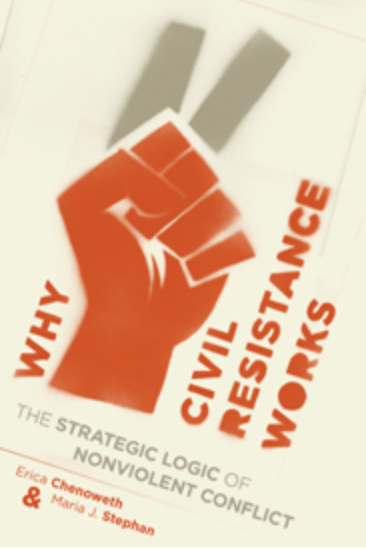36 Questions to Save the Nation: Part 3

If you're just joining, Part 1 is here,
[Authors's note: I am discovering I had a lot more to say about this than I anticipated. Here, at least, I think we're out of the setup, and into the meat of it.]
At the end of Part 2, I left us with an inventory of the things we'd covered:
- A country that is behaving very badly – and a lot of people who have chosen to break their relationships with the idea of governed, civil society.
- A relationship-building intervention that we know is cheap, easy, and powerful.
- A framework for modifying that intervention to any number of other situations.
- Strong evidence that having a goal and a clear target is much more effective than not having those things.
- A very big goal of our own: massively improving the experience of every person living in the United States.
But with those guns still on the mantle, and us finally entering the third act, let me tell you right now which ones will not go off.
I am not about to say that we can just talk our way out of this.
I am not about to suggest that we prioritize understanding, over action.
I am not about to commit, nor am I about to let you believe I am about to commit, the sins of the newspapers who wrote "Nazis Are People Too" profiles in the wake of the first Trump victory. We have a goal. Many truly awful people stand between us, and it. This is not about being empathetic to them while they plunder our country, gut our government, and disappear our people.
But I am going to say this:
- No country will survive if the people in it do not want to get along.
- There were 77 million people who voted for Donald Trump.
- People are the most powerful force there is for persuading other people.
In other words, the social fabric of the United States should be considered as core to its infrastructure as roads and bridges – and the roads and bridges only just got upgraded from a C-minus to a C. When it comes to the social fabric, there appears to be a real and present danger of ripping right down the middle. It's not going to fix itself, so we need to be the ones to fix it. But what does that look like?
Amateurs talk strategy, professionals talk logistics.
This particular quote is attributed to General Omar Bradley, American general in the second World War. But even if he didn't actually say it, there were dozens of other people who have said something very similar, including (according to a random man on Quora) Sun Tzu, Napoleon, and Alexander the Great. These are not the kind of people I thought I'd ever need to quote, but here we are. So let's talk logistics.
The First Goal: Them, Eventually
This wouldn't be The Plan without a clear goal, so what exactly are we talking about? The goal isn't the place to start worrying about costs, so let's lay it out clearly: We want to convince 77 million people that politically supporting a man like Donald Trump (because there will be more after him) is inexcusable.
Ludicrous? Maybe. Impossible? I refuse to believe it. Is the philosophy he represents such an old and familiar part of American society that its presence hasn't even really been questioned by millions of its citizens? No doubt. But I just don't care about that right now. Our goal is unambiguous, and uncompromisable: a society full of people, who hold beliefs that will allow our country to survive. (Pedantic note: Even if we split in two, we still wouldn't want a country of 77 million people who thought Trump was a good person, anywhere in the world.)
The Mechanism
There's been discussion about the overwhelmingly right-wing nature of internet media (including in this piece from The Plan), and talk about changing that. And yes we do need to completely reshape the entire information ecosystem of the country but that is probably even more difficult than it sounds – and it sounds vast, glacial, and exorbitant. Though perhaps worst of all, it just sounds incredibly indirect. Yes we want to expose more people to more progressive ideas and yes we want to normalize a very different set of stories and actors – but that's not the goal. The goal is to convince 77 million people that politically supporting a man like Donald Trump is inexcusable. And if that's the goal, that's the thing we should try to do. Which will be most successful not with ads or shows or indirect exposure, but through direct contact from real people and a precise goal.
Now, I'm sure that the precise goal would need some more finessing, and the exact way in which the interventions took place should be designed with enormous care, but I think the outlines are clear. We need to send not just a message, but a messenger, to every person we need to convince. They need to be armed with a goal, on which they and their conversation partner can work together – likely, the improvement of the country, and some more specific version of it that they agree on, together. They need to be armed with, and trained for, a process for approaching that conversation, which will almost certainly include a list of relationship-building-type questions. And they need an infrastructure that will connect them with these people, something like a big video chatroom. (More on this later.)
But what would it look like, at scale?
Assumption 1: Time
In "The Experimental Generation of Interpersonal Closeness," strangers became amazingly close friends in just one hour of conversation. In my middle school intervention, it took one hour to establish a behavior-correction plan, and six months of text messages to enact it. The Stanford Deliberative Democracy lab finds that people's minds can be changed on serious issues over the course of just a weekend, after single-digit hours of group conversation. And deep canvassing conversations have been shown repeatedly to be extraordinarily effective, in as little as ten minutes.
So if we're talking about a conversation that is highly structured, professionally designed, and with a trained participant, then one hour per person could probably have an extraordinary impact - especially if it were followed up with a long-term maintenance period like text messages. Now, I'm perfectly willing to consider that in actuality, and depending on the person, it could actually take more like 10 or 100 hours for a single individual. And honestly, based just on my feelings, even that seems optimistic – but I choose to trust the literature here, over my gut. For the sake of our sketch, let's run with the most hopeful number – 1 hour per person. Has anyone ever sat down with you, looked you in the eyes and said, ...?
I'm fundamentally concerned about our shared future, and I want to figure out a way that you and I, personally, can make this country a better place
With that intention, something miraculous can happen in as little as an hour.
But there's also a far less hopeful number to be considered – the time we have left, in which to do this. According to the Nazi Timeline, we have about a year. There were 15 months between the Night of the Long Knives (a vast political purge, as well as a massacre) and the Nuremberg Laws (making Jews legally distinct).
According to Senator Chris Murphy, we have much less.
Murphy: "If we continue to observe norms, if we continue to engage in business as usual, this democracy could be gone. I don't think we have a year to save American democracy. I think the way the president is acting ... puts out democracy at immediate risk."
— Aaron Rupar (@atrupar.com) 2025-03-16T14:37:16.099Z
But let's see what a timeline of a year would look like.
Assumption 2: Labor
Let's say an unpaid, non-super-human, can handle 1 such conversation a day, five days a week. Asking for one hour a day, to save America? It doesn't seem impossible. That means about 250 a year. Divide 77 million by 250, and you get 308,000 – meaning, three hundred eight thousand people, working very hard, to hit everybody, in one year. (Which, again, might be more time than we have.)
If instead they were paid and full-time, that would be more like 5 or 6 conversations in an 8-hour day (because remember each conversation is taking an entire hour on its own) so let's say 30 a week, 1500 a year, that's around 51,000 full-time paid positions. But in neither of these situations would it be feasible to maintain those relationships long-term, which might be even more important.
So imagine if we took the model of the 6th-grade teacher. Then one person can handle about 30 people, over the course of 6 months, with daily text-message follow-ups. So they could handle just 60 people a year – well let's say 77, for round numbers – and we'd need one million volunteers. So we have a range. From about 50,000 people, to 20x that many.
Is a million volunteers impossible? Certainly not for a presidential election – Johns Hopkins Professor Hahrie Han says that Obama had 2.2 million. Of course, just because something hasn't been done doesn't mean it's impossible, but it's good to know that these numbers seem squarely within the bounds of previous, similar, events.
Assumption 3: Cost
For the volunteer scenario, the cost is approximately zero of course for the vols themselves – but there would almost certainly need to be professional full-time staff, trainers, administrators, schedulers, and software folks behind the scenes. To oversee a million people, which could make it the 5th largest company in the world, shall we say ... 1,000 paid staff? And what would they be paid?
As a salaried, health-cared, W2 organizer with the Pennsylvania Democratic Party in 2024 (there will be stories), I was paid around $20 an hour. That's $40k a year, round for benefits make it $50k, times 1,000 that would be $50 million dollars for one year, and 308,000 volunteers. One the one hand, massive. On the other, $36 million was spent on repeating a single ad in 2024 – and that was just a sliver of the ten billion spent on ads overall. (And if you had the 1,000,000 volunteers each chip in $50, they could pay for the whole thing themselves.)
Of course if you want your 51,000 full-time conversers to be paid too, that's another $2.6 billion: 51k * 50k. In other words, volunteers looks like the way to go, unless you know something I don't.
If all of this is disheartening, or these estimates seem an order of magnitude too small (and they might be!) or I've made it seem even more impossible than before, then maybe Jamelle will help put it in perspective better than I could:

One way or another, this has gotta happen.
But maybe it doesn't need to happen – first.
If you made it this far, and you haven't subscribed yet, I'd like to ask as a personal favor that you please subscribe, and share the newsletter with people you know. If I don't know that someone is listening, I have no reason to keep writing – and if I can't pay my rent, I have no ability to keep writing. With my profound gratitude to everyone, both paid and free.
And if we make it to Sunday, I'll see you Sunday.



